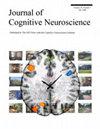Slower Postencoding Stimulus Reaction Time Predicts Poorer Subsequent Source Memory and Increased Midline Cortical Activity
IF 3
3区 医学
Q2 NEUROSCIENCES
引用次数: 0
Abstract
Individuals vary widely in their ability to encode and retrieve past personal experiences in rich contextual detail (episodic memory). However, it remains unclear how within-subject variations in attention, measured on a trial-by-trial basis at encoding, and between-subject variation in attention and executive function abilities affect encoding-related brain activity and subsequent episodic retrieval. In the present study, 38 healthy young adults (mean age = 26.5 ± 4.4 years, 21 female) completed a task fMRI study in which they were instructed to encode colored photographs of everyday objects and their left/right spatial location. In addition, participants were asked to respond as quickly as possible to a central fixation cross that expanded in size at a variable duration after each encoding trial. RTs to the fixation cross preceding and following the object were hypothesized to reflect attentional variations pre- and postencoding stimulus, respectively. A mixed-effects logistic regression was performed to predict source memory success from pre- and poststimulus RT. Slower poststimulus RT, but not prestimulus RT, predicted poorer subsequent source memory within-subject. In addition, between-subject variation in task-switching ability, self-reported cognitive failures, and self-reported attentional abilities affected the association between poststimulus RT and subsequent memory. In addition, trial-by-trial task fMRI analysis indicated that increased encoding activity within default mode network regions was associated with slower poststimulus RT and with subsequent source retrieval failures. These results shed light onto the cognitive and neural factors that contribute to within-subject and between-subject variations in source memory ability.较慢的编码后刺激反应时间预示着较差的后续源记忆和中线皮层活动的增加。
个体在以丰富的情境细节对过去的个人经历进行编码和检索的能力上差异很大(情景记忆)。然而,目前尚不清楚的是,在编码试验的基础上测量的受试者内部的注意力变化,以及受试者之间的注意力和执行功能能力的变化如何影响与编码相关的大脑活动和随后的情景检索。在本研究中,38名健康的年轻人(平均年龄= 26.5±4.4岁,其中21名女性)完成了一项功能磁共振成像任务研究,在这项研究中,他们被指示对日常物品的彩色照片及其左/右空间位置进行编码。此外,参与者被要求在每次编码试验后尽可能快地对中央注视交叉作出反应,该交叉在不同的持续时间内扩大大小。假设注视交叉前和注视交叉反应分别反映编码前和编码后刺激的注意变化。采用混合效应逻辑回归预测刺激前和刺激后的源记忆成功。较慢的刺激后RT,而不是刺激前RT,预测受试者随后较差的源记忆。此外,任务转换能力、自我报告的认知失败和自我报告的注意能力在受试者之间的差异影响刺激后RT与后续记忆之间的关联。此外,逐项任务fMRI分析表明,默认模式网络区域编码活动的增加与刺激后RT变慢和随后的源检索失败有关。这些结果揭示了认知和神经因素对主体内部和主体之间源记忆能力的影响。
本文章由计算机程序翻译,如有差异,请以英文原文为准。
求助全文
约1分钟内获得全文
求助全文
来源期刊
CiteScore
5.30
自引率
3.10%
发文量
151
审稿时长
3-8 weeks
期刊介绍:
Journal of Cognitive Neuroscience investigates brain–behavior interaction and promotes lively interchange among the mind sciences.

 求助内容:
求助内容: 应助结果提醒方式:
应助结果提醒方式:


